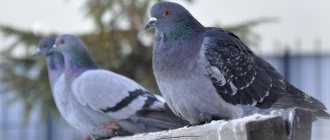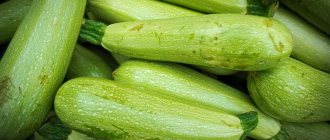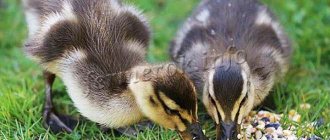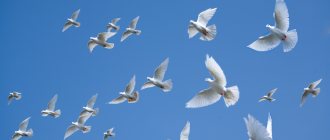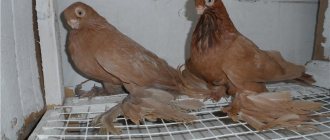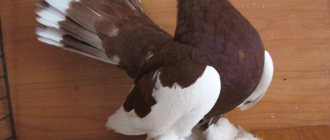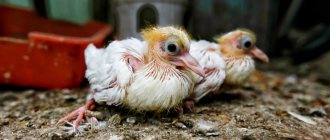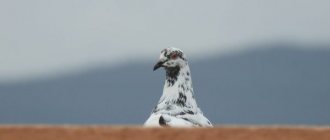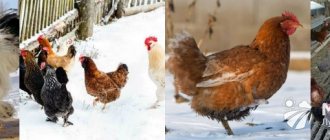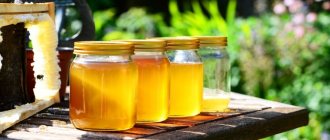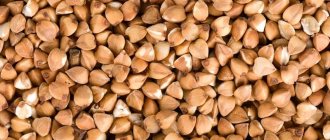Pigeons are not fastidious animals, but even they require special care during the winter season. First of all, they need to be provided with proper living conditions, maintaining a suitable temperature regime in the dovecote. It is equally important to correctly adjust their diet, increasing the daily caloric intake so that the birds can get all the necessary energy to warm their own bodies.
Requirements for a dovecote
Before the onset of winter cold, it is necessary to create comfortable conditions in the dovecote in order to prevent the birds’ immunity from weakening and the development of colds in them. How to create the necessary conditions, we will find out further.
Temperature conditions and insulation
There is no need to create a “tropical” climate for pigeons in winter, since they can safely withstand temperatures as low as -7°C. However, if the room becomes colder, then the probability of pigeons freezing is quite high. In this case, it will be necessary either to carry out additional heating of the room, or to increase the calorie content of the birds’ diet.
Experienced breeders do not see the need for additional heating of the room in winter, since their observations show the following: if the pigeons are well-fed, they do well without heating. However, not everything is so simple.
Indeed, with proper nutrition correction, low temperatures do not pose a great threat to pigeons, but in the cold, food and water often freeze. So, if the plumage protects a bird from cold weather, then it is difficult to avoid hypothermia if frozen food or cold liquid enters the body.
In order to avoid such a problem, it is still worth thinking about insulating the dovecote. To do this you need to do the following:
- seal all cracks in the room;
- if possible, install double-glazed windows that allow you to retain heat;
- cover the walls with thermal insulation material such as polystyrene foam or plasterboard;
- provide thermal insulation of the roof, which is enough to be sheathed with the same materials as the walls.
Pigeons can peck at the sheathing. To prevent this, chipboard/fibreboard sheets should be installed on top of it.
Lighting
The optimal daylight hours for a pigeon last 12-14 hours. If in the summer you can get by with the sun's rays, then in winter the daylight hours are reduced, so there is a need for additional lighting.
Incandescent lamps can be used to illuminate the room with artificial light. The source should not be excessively strong, so you can get by with 1-2 50 W bulbs. With their help, daylight hours can be artificially extended to 12-13 hours, otherwise the bird will not be awake in the evening.
During the onset of severe cold, the daylight hours should be extended to 14-15 hours, and an additional meal should be introduced into the diet.
Ventilation
To organize normal ventilation, that is, air exchange, two pipes are installed in the dovecote - supply and exhaust. The first is most often mounted under the ceiling, and the second - at a height of 15 cm from the floor.
In winter, it is quite problematic to ventilate the dovecote, since there is a risk of hypothermia. In this regard, it is worth installing valves on both pipes, which partially cover the air inlet and outlet. Such manipulation will prevent drafts and also maintain a comfortable temperature in the room. For the same purpose, the front door should be tightly curtained with a warm blanket and plastic film.
Experienced breeders recommend making nest boxes quite deep (at least 35-40 cm) and placing them under the ceilings.
Cleaning
In winter, cleaning the dovecote is quite problematic, because the weather outside drops to critical levels. Meanwhile, in no case should you refuse to clean the premises - it must be carried out once a month, and in full and using disinfectant chemicals.
During the cleaning work, the bird must be moved to a comfortable place where normal temperature is maintained. The cleaning itself is carried out taking into account the following rules:
- remove feeders and drinking bowls from the premises before cleaning;
- to disinfect a room, choose products with a quick drying time and the ability to destroy harmful microorganisms at sub-zero temperatures;
- use heated water to dilute chemicals, especially in severe frosts;
- using special means, treat all surfaces in the room, including the ceiling;
- Disinfect all tools used to care for pigeons.
Birds can be returned to the dovecote only after the disinfectant solution has completely dried.
Which species are the last to fly away?
When insectivores have already left cold areas, herbivores follow them. At the same time, ducks are the last to leave their native places, since they are able to obtain food until the reservoir is covered with ice. Only in this case it will no longer be possible to catch fish, so you will have to look for more suitable regions.
Ducks prefer to stay in the Balkan Peninsula for the winter, while swans prefer to fly to the UK, as well as Greece. As for the cranes, they winter in Italy.
There is also a separate species of birds that are considered nomadic. This means that they prefer to stay in their homeland in autumn and also during warm winters. They fly away only if the air temperature becomes too low.
The following individuals can be classified as nomadic:
- Bullfinch.
- Chizh.
- Shchur.
- Waxwing.
- Goldfinch.
- Tit.
As you can understand, there are many species of birds that prefer to winter in the south. They can fully feed themselves there in order to return to their native places in the spring.
There are also species that do not fly away. At the same time, they often depend on humans, because they feed in feeders or in trash cans. They can be found even on snowy days, when other birds have long left the region. If possible, then you should definitely feed them with grain crops so that the birds can successfully survive the winter.
How to feed pigeons in winter?
With the onset of winter cold, the diet of pigeons needs to be adjusted by increasing the daily caloric intake so that the bird receives enough energy to warm its own body. In addition, you will need to exclude certain types of food from the menu and increase the dose of vitamins and minerals. Thus, there are many nuances of feeding pigeons in winter, so each aspect should be given special attention.
What to feed?
In winter, it is cool in the dovecote, so the birds need to be fed especially well, giving from 30 to 50 g of feed per day. The best option for feeding pigeons is a grain mixture. The more types of grain it contains, the better. Barley and oats are considered the most beneficial for birds, together with which you can also give:
- millet;
- sorghum;
- wheat;
- corn;
- sunflower and hemp seeds.
Here is an example of the optimal grain ratio in the winter menu:
- oats – 40%;
- barley or pearl barley – 40%;
- crushed corn – 10%;
- chopped lentils – 10%.
In addition, at one of the winter meals, pigeons should be given grated boiled potatoes, previously mixed with wheat bran. Pigeons can also be given carrots and cabbage as other root vegetables, and apples and bananas as fruits. It should be noted that up to 30% wheat can be included in the grain mixture at any time.
If the birds are left to fend for themselves for a week or more, several bunker (automatic) feeders should be placed in the dovecote. You need to pour homogeneous grain into each of them so that the birds work less with their beaks and do not scoop the food onto the floor in search of more tasty cereals.
What should you not feed?
The main difference between a winter diet and a summer diet is that in winter it is necessary to minimize the proportion of feed with a high protein content. This is necessary in order to reduce sexual activity in birds. The fact is that a high proportion of protein in the total diet will lead to the untimely appearance of chicks, which have low chances of survival in winter.
Legumes are the record holders for protein content, so they need to be completely excluded from the diet. To compensate for their deficiency, pigeons need to be given an additional portion of barley and oats.
It is also not recommended to give birds in large quantities:
- peas;
- vetch;
- buckwheat
In addition, pigeons should not be given foods the consumption of which will lead to illness or death. Thus, the following products are completely prohibited:
- baked goods, including white, gray and black bread, are poorly digested and provoke diseases of the gastrointestinal tract;
- milk, cheese and other fermented milk products – lead to dysbiosis in adults;
- fish, meat and meat products are completely indigestible by the bird’s body, so after consuming them the pigeon may die.
Sunflower seeds are rich in fat, so they can be given to pigeons from time to time, but only in small quantities.
Vitamins and minerals
In winter, it is difficult to find fresh grass, so birds develop a deficiency of nutrients. To solve this problem, the following vitamin products should be introduced into the diet:
- herbal flour;
- grated carrots;
- dried dill and parsley.
If it is not possible to diversify the menu with these products, you can purchase a special premix in the store. It will allow pigeons to withstand the winter and not get vitamin deficiency in early spring.
Vitamins A, D, E and K are necessary for birds. If it was not possible to purchase their factory complex, vitamins can be given separately. It should be noted that they are fat-soluble vitamins, so they are absorbed only with fats, after which they end up in adipose tissue and the liver.
Vitamin C enters the body of individuals along with root vegetables. Its additional administration is relevant only if the birds are diagnosed with decreased immunity. Here it should be taken into account that ascorbic acid is water-soluble, therefore it quickly falls into the blood and is just as quickly consumed by the body. Inventories do not accumulate even when there is an oversupply, so its level should be constantly maintained.
As for B vitamins, pigeons receive them along with grain, which predominates in the winter diet, so it is unlikely that they will have to face their deficiency.
Of course, it is equally important to give birds mineral supplements in winter. You can purchase them or prepare them yourself. Here is the optimal composition of a complex supplement:
- 4 parts of grated red brick (brick chips);
- 2 parts of crushed old plaster;
- 1 part river sand;
- 1 part crushed eggshell;
- 1 part meat and bone meal.
All components must be mixed and filled with 2% salt solution. This mixture should be given to pigeons as a mineral supplement. For the same purposes, you can use chalk, sulfur, fertile soil, crushed lime and gravel. Decoctions based on nettles, pine needles or berries are also useful. They can be given as drinking water or used in making mash.
The feather cover of pigeons suffers from cold air - it becomes less soft and fluffy. To strengthen it, you need to add flax and rapeseed seeds to your diet. Their daily norm is 4 g.
Number of feedings
Diet also depends on the time of year. So, if in summer feeding is done 3 times a day, then in winter - 2 times a day. As a rule, the first feeding is carried out at 9:00, and the second at 20:00. The evening portion must be supplemented with a vitamin-mineral mixture, and its composition must be strengthened compared to the summer one, since in the cold season the birds are deprived of access to fresh grass.
Features of feeding different breeds
Feeding of pigeons should also be adjusted depending on their breed:
- Meat breeds, German and other large birds can be fed large grains like peas and corn.
- In winter, it is better to give homing pigeons a grain mixture, which consists of oats and barley (4 kg each), as well as lentils and pre-crushed corn (1 kg each). The number of components can be changed, but the ratio must be left the same. This mixture should be given to birds at the rate of 35 g per adult.
- Give small and short-beaked breeds small grains or cereals.
- Give decorative pigeons no more than 40 g of food per day, since they lead a sedentary terrestrial lifestyle.
- Feed the chicks in moderation to prevent them from overeating.
- Exhibition pigeons should be given food with a high oil content - hemp, flax and sunflower seeds. In addition, such individuals should be given sprouted grains and vegetables, grated or finely chopped.
If birds are bred for slaughter, the feed rate is above 40-50 g per day and is determined individually.
Features of feeding chicks
If the chicks are separated from their parents during the cold season, it is extremely important to strengthen their nutrition. The daily food intake is about 40 g. They should be fed three times a day in this way: 10 g in the morning, 10 g at noon, 20 g in the evening. Chicks do not like legumes, but they readily eat wheat, so it can be added to the grain mixture. It should also be enriched with fish oil.
By the time the chick leaves the nest, the diet should be adjusted again, reducing the wheat content and increasing the proportion of protein feed.
Read more about feeding pigeon chicks here.
Kedrovka
Nutcracker
Belongs to the corvid family. The second name is Orekhovka. The dimensions are similar to a jackdaw. The beak is long and powerful. With its help, the bird can easily extract nuts from the cones. Makes reserves in a special sublingual pouch. Accumulates up to 90-100 nuts at once, which are then moved to the nest. Also, supplies are made in the ground or in snowdrifts. This property helps to renew coniferous trees - part of the food supply germinates with the arrival of spring.
How to water pigeons in winter?
When the temperature indoors or in enclosures is sub-zero, some recommend filling drinking bowls with snow rather than water, so as not to kill the pigeons. Experienced breeders warn that in winter pigeons should not be given either snow or melt water, since such actions lead to severe hypothermia of the bird, which can get sick and, in the worst case, die. This rule applies not only to representatives of capricious breeds, but also to pigeons accustomed to severe frosts.
There are three ways to solve the problem:
- every 2-3 hours, change the cold water in the drinking bowls to warm;
- install heated drinking bowls in the dovecote;
- Pour small volumes of water into the drinking bowls several times a day so that the birds have enough for 30-60 minutes.
It should be noted that the problem of hypothermia will not be relevant if the dovecote is insulated and the temperature outside the window is kept above -20°C. In any case, you need to remember that the water temperature in the drinking bowls should not be lower than +8°C.
After the thaw, the pigeons need to be visited every day, making sure that the water in the drinking bowls does not freeze and the snow in the containers does not set.
Is it possible to keep it outside?
As already mentioned, domestic pigeons, with the exception of some decorative breeds and chicks, can withstand low temperatures quite painlessly. Therefore, they can be kept outside in winter if:
- there is protection from snow and cold winds;
- there are no severe frosts;
- there is a high-calorie diet;
- there is constant access to water at an acceptable temperature;
- pigeons are protected from birds of prey and animals.
Find out how long domestic and outdoor pigeons live on average.
Preparing for the breeding season
Individuals of different sexes should be kept separately in winter so that they do not waste their energy on early egg-laying. Meanwhile, this is an excellent time to select pairs on paper or in a special pigeon breeder’s diary from which you can get chicks that are closest to the breed standard. The following recommendations should be taken into account:
- There is no need to leave only high-quality birds for the breed, since high-quality offspring can also be obtained from not very successful pigeons. In addition, sometimes almost perfect chicks can be quite unsightly.
- It is impossible to breed pigeons with the same defects that are unacceptable according to the standard, since in the future the offspring of the pair will have a marriage.
- Unless absolutely necessary, you should not select a couple consisting of close relatives.
- There is no need to focus on the bird’s exterior: care in incubating and feeding chicks, orientation to the area - all these characteristics are inherited.
- If there is no suitable pair, you can look for the desired bird from fellow pigeon breeders, but new birds should not be immediately allowed into the pigeon coop, as this is unsafe. Initially, they should be quarantined, keeping them separate from the rest of the pigeons for some time. You should monitor their condition and, if possible, submit their droppings for analysis to a laboratory. Young animals of low value can be added to them. If the bird is sick, it will definitely show.
- It is better not to buy pigeons kept in aviaries, since they are bred behind bars all year round and lose the ability to fly in a circle and the ability to navigate the terrain. If in the cage they cannot be distinguished from flying birds, then outside it everything becomes clear.
City pigeons live 3 times less than domestic pigeons, and also more often suffer from various diseases. However, even if the bird is kept in comfortable conditions, in winter it is necessary to pay special attention to caring for it so that it can safely survive the cold season and prepare for the breeding season.
0
0
Copy link
Do birds spread harmful diseases?
Mikhail Kalyakin Director of the Zoological Museum of Moscow State University, ornithologist, Doctor of Biological Sciences
To catch something from a bird, you have to try really hard. I am sure that there are no people in the city who will hug and kiss them. That's why everything is calm here.
Pavel Kvartalnov Researcher, Faculty of Biology, Moscow State University, Candidate of Biological Sciences, participant in the Birdwatching Moscow project
Birds can indeed carry diseases that are dangerous to humans, such as psittacosis and avian influenza. But sick individuals in the wild quickly die. Another thing is species that live in urban environments, where they can easily find food and shelter. As they continue to live, they spread the infection. The most dangerous to humans are rock pigeons. Of course, in some years, among other species wintering in cities, mass diseases occur, accompanied by the death of birds. And there is a possibility of transmission of these diseases to humans. To protect yourself, it is enough not to catch them and not to pick up weakened individuals.
There will be no harm from the seeds
Feeding pigeons in winter at home should be quite different from what is included in their menu in summer. The diet differs significantly from the diet of feathered savages
Above we recommended feeding wild pigeons peas and nuts because they are very nutritious. Their life in winter is not easy, the birds live from hand to mouth and they are definitely not in danger of obesity. Therefore, such high-calorie and protein-rich foods will only benefit them.
Compassionate citizens can feed pigeons on the street with raw sunflower seeds, scattering them on the asphalt. Since the flocks that gather at this time are usually quite large, there will be no harm to anyone.
In the article “What to feed pigeons” we give general information about what pigeons eat at home. And here below we will consider important points concerning the cold season, when your pets will need a special diet to maintain good shape.
Character and behavior
Pigeons are birds with a special disposition and unusual habits:
- Pigeons always find a home to live in.
Pigeons rarely sit in trees - they prefer roofs and eaves of buildings, curbs, concrete structures, and the ground. This interesting feature is explained in different ways:
- Some recall that birds used to play the role of postmen and always returned to the right home. Hence the special love for buildings. What prevented the birds from perching on a branch was a letter on its paw.
- Others refer to the fact that wild pigeons more often settle in steppe expanses, on rocks, along river banks and much less often (mainly wood pigeons, green and tropical pigeons) in forests. It turns out that even next to a person, these birds try to choose a place to live that resembles their natural environment.
These birds, unlike many others, do not like to sit on wires. Current is not scary for pigeons. Perhaps the reason is that these birds fly in a straight line, and they need space to perform maneuvers, including when landing and taking off.
Chizh
Siskin
Representative of passerines. Chooses coniferous forests for life. It feeds on insects and seeds. At the end of autumn, it chooses a nesting site close to ice-free water bodies. The bird is excellent for keeping at home. It quickly settles into cages and accepts food from a person’s hand. In this case, the diet is formed from rapeseed and flax seeds; food for canaries is suitable. Feature: capable of learning a variety of tricks. The color is bright yellow, with a gray tint.
Why don't they fly away?
The answer to the question why pigeons do not fly to warmer regions for the winter lies in the explanation of why many birds generally fly south in the fall. They do this not at all out of fear of frost, as one might think.
For example, wild geese, ducks and swans, due to a thick layer of subcutaneous fat, are able to easily withstand fairly low temperatures. However, freezing of reservoirs stops birds' access to food supply. It is because of lack of food that they are forced to leave their native lands.
Pigeons, who know how to find food for themselves in winter conditions, are spared the need to undertake long, difficult, troublesome and dangerous journeys to foreign lands.
Interesting abilities
The expression “messenger pigeon” does not surprise anyone. For thousands of years, these birds successfully coped with a similar task, which Genghis Khan, Caesar and many other rulers used in their time. The phenomenon is simple: the birds were sent with a message to the places where their home was. For this purpose, they used individuals that had already formed a pair.
The reason is that on the way the pigeon could meet a potential partner, and then its return home was in question.
Experts explain the interesting ability of pigeons to find their way as follows:
- Birds perfectly perceive low-frequency signals that come from various objects on the surface of the earth: forests, hills, seas. This is what helps them navigate the terrain well.
- The magnetic receptor system on the beak allows pigeons to monitor changes in the earth's magnetic field and determine their course.
Interesting! Pigeons have well-developed visual memory and sense of smell. These qualities “work” together and give these birds unique abilities.
